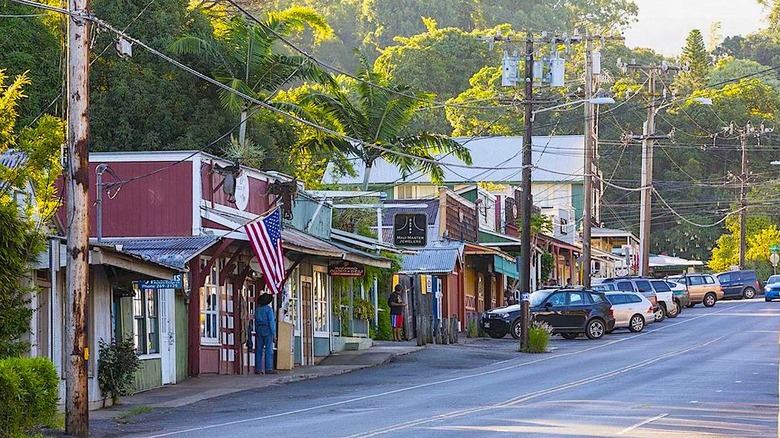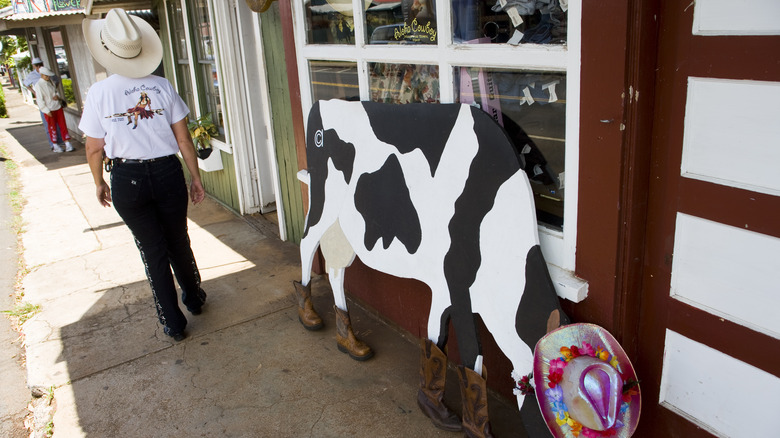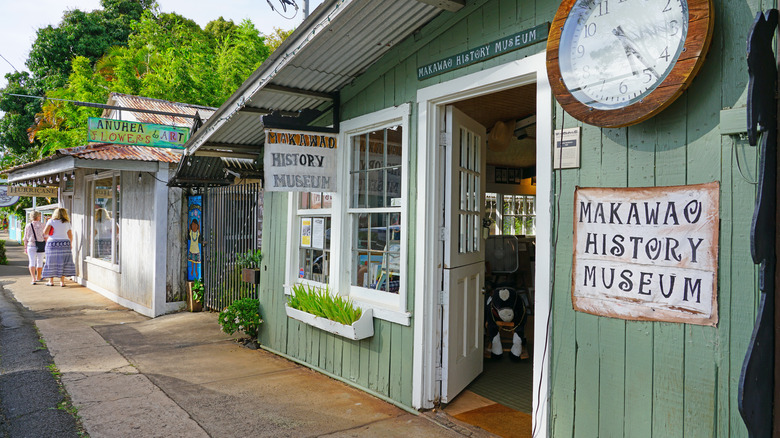Hawaii's Underrated Cowboy Capital Offers A Unique, Tropical Escape With A Fascinating History
About an hour inland from the stunning beaches that line Maui's western shore, there's a place where locals trade in board shorts for jeans and ride horses, not surfboards. Located almost 1,600 feet above sea level, Makawao is an unexpected find on the Hawaiian island known for sun, sand, and surf. And while its ancient history has roots in Polynesian culture, its very existence today is the result of a coming together of cultures and traditions from around the world; a merging that produced an unexpectedly diverse community on a tropical island smack-dab in the middle of the Pacific Ocean.
Simply put, it's a cowboy town where real-life ranchers decked in cowboy hats and spurs belly up to the local bar right alongside an eclectic mix of local artists, suntanned tourists, and island residents who prefer the cooler climes of the Upcountry to the sun-drenched beaches at sea level.
It may be underrated, but it's also unexpected, unknown, and even under-appreciated. Let's face it: With the exception of signing up for a day trip to watch the sunrise from the summit of Haleakalā (Maui's highest peak tops out at more than 10,000 feet), few vacationers are willing to slip away from the beach long enough to explore an Upcountry cowboy town. Unfortunately for them, they're missing out on one of the most interesting communities on the island.
Makawao: A ranching community on Maui
Before European explorers first set foot on the island of Maui, Indigenous people relied on Maui's unique forest in the Upcountry for wood harvested from native koa and ohi'a trees to build canoes and dwellings. The region's rich soil was also ideal for growing food crops like sweet potatoes and taro. Beginning in the late 1700s, a series of events began to herald in a new era. First, in 1793, British sea Captain George Vancouver gifted King Kamehameha I the remaining livestock from his ship, which included five long-horned cattle.
Kamehameha gave the livestock protected status to ensure the small herd would multiply quickly. In 1803, American Trader Richard Cleveland presented Kamehameha with a horse and proceeded to dazzle the island leader with a riding demonstration. Kamehameha was so taken with the equestrian display that he swiftly imported more horses to the island. Then, in 1830, Hawaii's third king, Kamehameha III, recruited vaqueros (highly skilled Spanish wranglers) to teach locals how to use horses to herd and breed cattle.
The Upcountry climate was especially conducive to farming and ranching, so the industries thrived. Over time, a support infrastructure began to emerge in the form of supply houses, grocery markets, and entertainment venues. By the early 1900s, Makawao, a 3.5-square-mile municipality, was home to a general store, a movie theater, and two service stations catering to residents and workers. And even as the tropical allure of the Hawaiian island's sandy shores and pristine beaches caught the eye of tourists from the mainland United States, Makawao retained its decidedly "Old West" identity.
Things to do in Makawao
Makawao has been listed among the "Top 25 arts destinations in the United States," according to Go Hawaii, so visitors looking for souvenirs that will blow a hotel's gift shop away can spend an afternoon checking out every store and gallery on Baldwin Avenue. For a unique keepsake, visit Maui Master Jewelers or the fascinating Little Tibet, and then celebrate your finds with a creative meal and locally inspired cocktail at Makawao Public House — a fan-favorite with 4.5 stars on Yelp.
While Makawao is packed with history, its most famous landmark might be the place that provides its most delicious food. Originally founded in 1916 and set in its current location on Baldwin Avenue for more than 80 years, T. Komoda Store & Bakery is a legendary stop, but you'll need to plan this specific visit accordingly. People line up for the iconic donut on a stick, as well as malasadas and cream puffs, in the morning hours, and once it's all gone, the doors often close, sometimes as early as 10 a.m.
After a morning spent snacking, shopping, and perusing galleries, head north to Ho'okipa Beach Park, which boasts a little bit of everything that makes Maui so special. For starters, the white sand beach is ideal for an afternoon under the sun and watching the action on the waves, as this is a famous spot for windsurfing. Don't let the rougher water deter you, though, as this is a great place for appreciating Hawaii's marine life as well. Children can explore the various tide pools, and you might even spot some green sea turtles, which is an experience that tops any souvenir.


